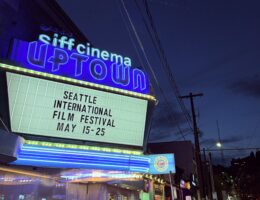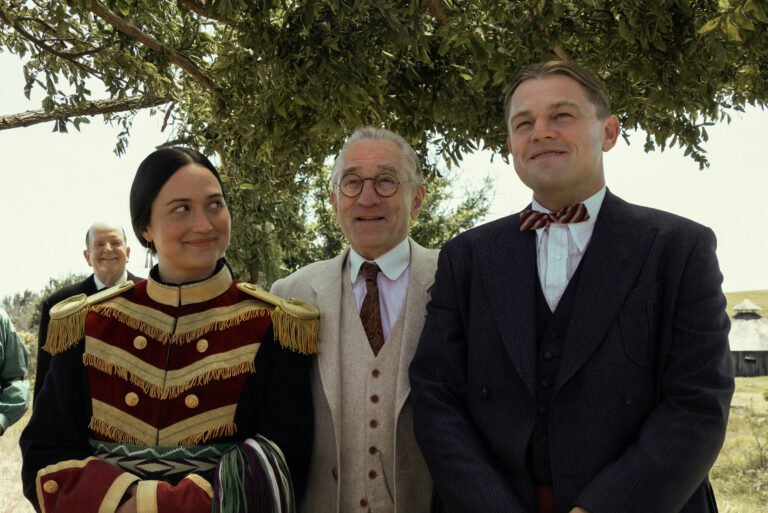In his review of Killers of the Flower Moon, Chris called Martin Scorsese’s three and a half hour historical film a masterpiece and one of the best movies of 2023. Josh saw it over the weekend and immediately wanted to talk about it, so we fired up a SunBreak Roundtable to hash out some thoughts and feelings about this epic movie. Spoilers, such as they are for a century’s old well-reported true story, follow.
–
Josh: Let me start by saying that I mostly agree with your characterization of the film as a masterpiece. It’s Scorsese in full command, painting on a vast canvas, telling exactly the story he wants to tell with his trademark directorial flourishes, often in subversion of how he’s used them in the past.
Like Leonardo DiCaprio’s naive WWI veteran Ernest Burkhart, we’re very quickly immersed into the history of the displaced Osage Nation’s riotous discovery of oil on their lands and the turn-of-the-century frontier boomtown setting, with a flurry of flashbacks, title cards, historical clips, and a pulsating rock-influenced soundtrack and visual overloads. Soon, though, the film quiets down and gets to its grim business: the systematic manipulation and murders of native americans in service of stealing the wealth that made them temporarily the wealthiest place in turn-of-the-century per capita. The set design is phenomenal, the costumes are outstanding (the blankets alone, a triumph!), and the soundtrack’s tremendous descent from raucous to mournful is tremendous. The acting, is across-the-board top notch and the hours melt away.
It’s a very good movie, but one that – for some obvious reasons – is very difficult to like. An alternative explanation is it’s a bad movie that I actually enjoyed, but I think the former is more likely. I don’t doubt that this choice is anything but intentional on Scorsese’s part.
Chris: Josh, it’s a pleasure once again to convene one of these roundtables! I see that we have different perspectives, so I’m sure it’s going to be fun hashing out our disagreements.
Josh: Let’s start with the source material. Chris, you read David Grann’s 2017 book Killers of the Flower Moon: The Osage Murders and the Birth of the FBI. I have not. But I have enough of an understanding from interviews and synopses, to assume that Scorsese and co-writer Eric Roth approached this adaptation from a different perspective than the book?
Chris: I did read David Grann’s book and my memory says that Grann focused more on the solving of the murders because this was one of the first truly high-profile cases the FBI solved. Scorsese’s film focused more on the relationships between Mollie’s family and Ernest’s.
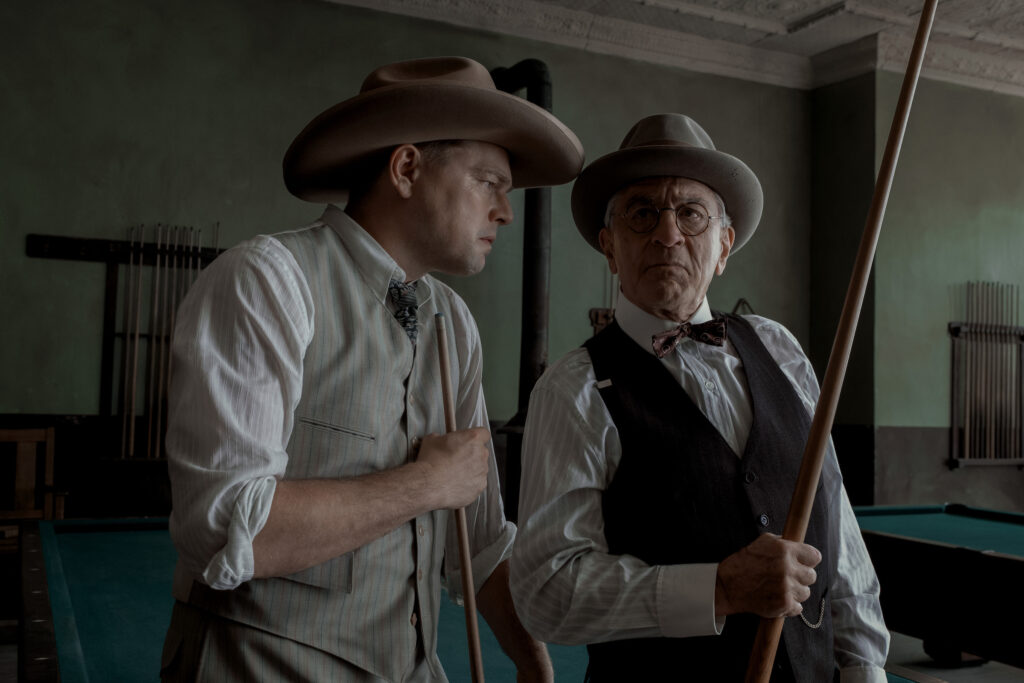
Josh: I say this as someone who was riveted for the entire 3.5 hours, so I don’t entirely mean this as a negative, but it strikes me that in focusing on Ernest Burkhart and his uncle Robert De Niro’s terrifying manipulator William “King” Hale, Scorsese chose to tell an incendiary true story of systemic racist oppression, near-genocidal murder in the form of personal betrayals of the worst order, and revolutionary crime solving from the least sympathetic perspective possible. And by essentially exposing the conspiracy in the film’s opening minutes, he intentionally robs the story of any whodunnit potential.
None of that can possibly be accidental, and to a degree it’s a marvel that it works. I never checked my watch or made a bathroom run, from the opening credits to the truly bizarre framing device at the end.
Chris: It’s so interesting that you think that! I usually really resist movies (or TV shows, or books, or magazine articles) that are so overtly one-sided, lacking any nuance, and are so incendiary. I didn’t see Killers that way, though I understand why you did. It’s not like there was anything really sympathetic
Josh: I suppose what I meant was that a film centered on the Osage perspective as their families were mysteriously decimated or balanced against the FBI’s investigation, culminating in a big horrible reveal might have been a more traditionally gripping format. I can imagine a dozen other approaches that might have made this more traditionally gripping, but I’m not an octogenerian master of cinema so it’s not my place to question the degree to which the Osage perspective and FBI storylines were sidelined.
Although Ernest is by no means a sympathetic character, we are largely with him as he participates in his wealthy uncle’s long slow-burning scheme to integrate themselves into the lives of the Osage, manipulate their lives, and steal their wealth through a series of marriages and murders. A simpleton army cook, spared from the killing fields of World War I by a weak gut, he’s pointed in the general direction of Mollie, a wealthy Osage heiress (a spectacularly reserved performance by Lily Gladstone), somehow charms her into wedding him, begins a family, and slowly drains the life from her as he facilitates the brazen murder of her entire family.
It’s revolting and never glamorized and the evil is committed almost entirely in plain sight of both the audience and the broader world. My initial reaction was that this was a bold choice to make the story unfold in the most “boring” way possible, almost a provocation to the audience to confront the matter-of-fact nature of these atrocities.
Chris: David Grann is one of my favorite investigative reporters and authors (I don’t think a week goes by without thinking of this story he wrote) but I think the script from Scorsese and Eric Roth is able to take liberties with regard to interpersonal relationships that Grann isn’t. That’s not a knock either way, just that they work in different mediums with different rules for accuracy.
Josh: But what to make of centering on Leo and Bobby D? We come to appreciate the resilience and character of Mollie and her family, but like the Osage people whose wealth was supervised by white “guardians”, their agency is similarly severely limited in its portrayal.
I suppose that this storytelling choice is in line with Scorcese’s long-held fascination with criminal and buffoons. Viewing the awful story through their lens doesn’t allow us to escape the cruel banality of their greedy offenses perpetrated upon the Osage people that were largely met with indifference from local law enforcement. Is this a revolutionary rebuke of the glamorization of crime? I just don’t know!
Chris: Bobby D has been starring in Scorsese movies longer than I have been alive and Leo has also been in a large number of his films as well. It could just be casting actors the director loves working with but it didn’t bother me so much because I thought Lily Gladstone was the moral and emotional center of the film.
Josh: Leo is tremendous here. In the book is his character also a late-40s useful idiot freshly back from the war? DiCaprio makes it work and gives an almost sympathetic angle to this reprehensible character, if only because he seems too stupid to understand that spinelessly murdering your wife’s entire family (and maybe also intentionally poisoning her to death every day) to steal their birthright / fortune just might be considered a bad thing?
I really don’t know what to make of him and again give everyone involved the benefit of the doubt that this was an intentional decision of writing, direction, and performance. Evil as boring and unknowable is far more chilling and real than imbuing it with superhero mastermind qualities it doesn’t deserve.
Chris: I don’t remember having much sympathy for Ernest when reading the book! I don’t remember much about the characters but I do remember seeing him as pathetic when he tries to get Mollie to take him back after the scheme (and his outsized role in it) is revealed.
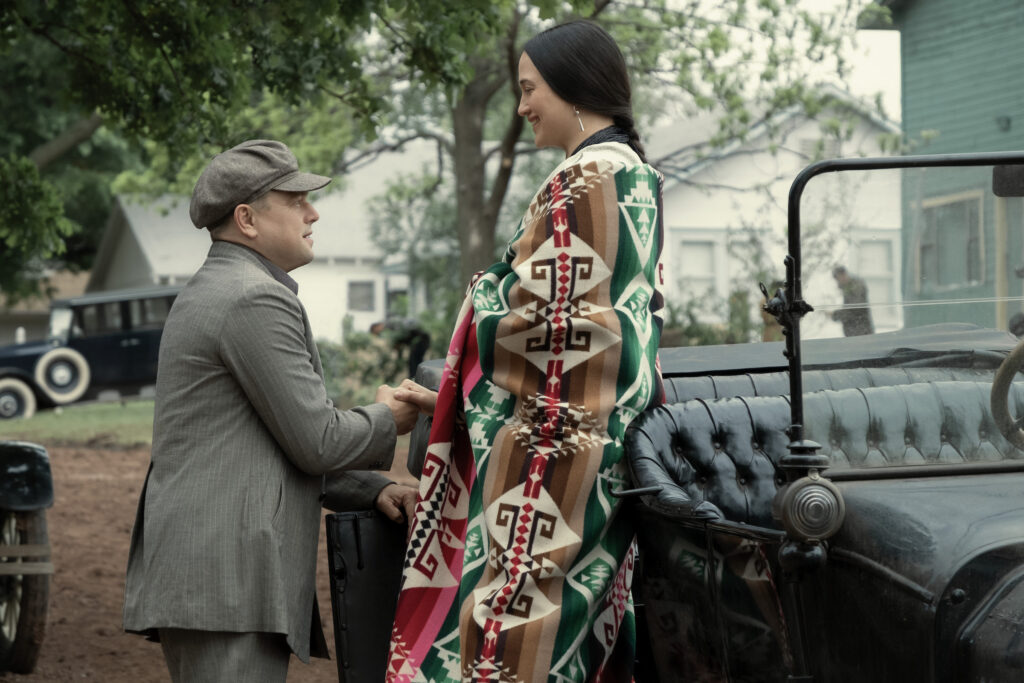
Josh: One thing that I’m curious about, which is maybe at the heart of my frustration with the movie: did you believe that Lily and Leo were in love? Their relationship is so central to the plot and it’s ambiguous to me whether he even perceives his acts as betrayals.
Chris: I understand what you mean and it’s not something I had pondered much, to be honest. My feeling is that Lily and Leo were attracted to each other and probably did love each other, but Leo’s loyalty to his uncle took priority.
Josh: I guess I am stuck with really wanting to know what she’s supposed to have seen in him? Ernest is supposed to be in his early twenties when he meets Mollie as her chauffeur. Between the styling, prosthetic bad teeth, and his actual age, he hardly comes across as a catch. Gladstone’s Mollie initially seems so smart and in control, so her being taken by this middle-aged loser is more mystifying.
Chris: I think her attraction to him was that it’s some combo of rebelliousness, exoticness, and actual attraction. I agree that a younger actor would be more convincing in the part. Leo’s pretty youthful but he’s still almost fifty.
Josh: Marty and Leo definitely have a history and I don’t begrudge them another fruitful collaboration. Nor do I want to suggest the dreaded computer de-aging that marred the Irishman. And while I’m sure someone in the back half of his forties looks like a kid to an octogenarian, I really think their relationship would have made so much more sense if his character had been played by a hot young dude.
Chris: I agree with you there. I am at the point where my hair is more gray than not and Leo’s five years older than me! That role probably should’ve gone to a younger actor, as good as he was in the part. My understanding was that Leo was originally cast to play the Tom White role that eventually went to Jesse Plemons. It is a curious choice and probably made the film a little less faithful to the book. I don’t know if that is a good or bad thing!
Josh: Honestly, I feel like that would’ve made a lot more sense. It’s a meaty part, but make room for new heartthrobs, Leo!
Josh: There are references to Tulsa and the massacre of Black Wall Street for context and we’re shown the bizarre system by which Osage people didn’t have any direct say over their own finances, but it is never really explained. Having heard interviews with D.G., I wonder if some of the attraction to white idiots was related to “full blood” Osage being “restricted” in their decision-making over the funds earned as their share of the oil headrights. Does being married to a white person grant their families more direct access to funds? If so, this makes this paternalistic and racist system all the more infuriating. It is so odd that it goes unmentioned.
Chris: This was a passage I highlighted on my Kindle from Grann’s book. I hope it answers your question.
The U.S. government, contending that many Osage were unable to handle their money, had required the Office of Indian Affairs to determine which members of the tribe it considered capable of managing their trust funds. Over the tribe’s vehement objections, many Osage, including Lizzie and Anna, were deemed “incompetent,” and were forced to have a local white guardian overseeing and authorizing all of their spending, down to the toothpaste they purchased at the corner store.
One Osage who had served in World War I complained, “I fought in France for this country, and yet I am not allowed even to sign my own checks.”
I don’t think reading the book is necessary to enjoying the movie by any means, but I do think it’s affected my ability to evaluate the context and storytelling because my mind filled in the context rather than looking for it on screen.
Josh: the film really avoided many historical explanations. We never really understand why (of if) Hale is beloved by townspeople, the distinction between the town and the reservation, or anything about the system of governance. This is a narrative choice to avoid egregious information dumps, but I wonder if it would have explained why so many Osage women seemingly lined up eagerly to marry sad sack white men.
Similarly, because so much of the film’s perspective is set with King and Ernest and their grim business, there’s also almost no mystery (to viewers) about why the Osage women are dying at such an alarming pace, or even any real semblance of shame about it. To some extent, this cuts off dramatic possibilities, but also is of course makes it more deeply disturbing with the matter-of-fact way that loved ones are picked off with little rhyme, reason, or fanfare.
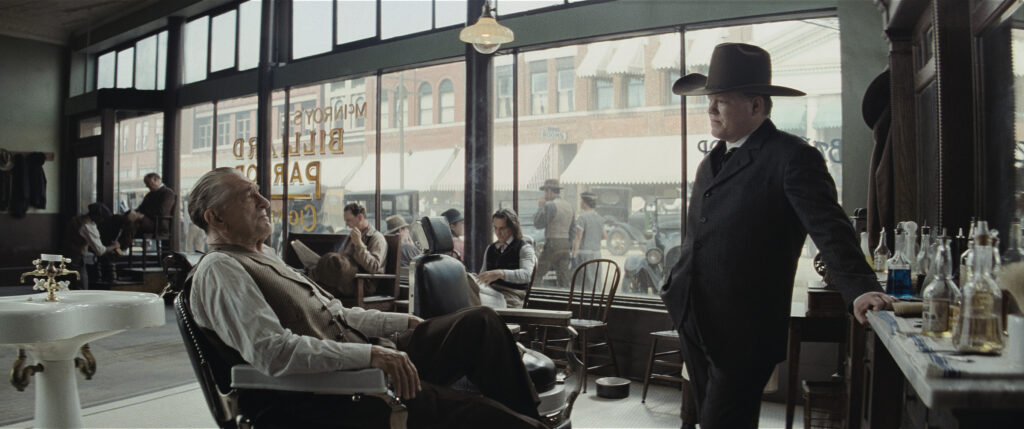
Chris: I don’t think it’s so much of a mystery why so many Osage women (and many Osage men) were dying under such suspicious circumstances, especially when the result of the deaths leads to consolidating all of the head rights to the deathly sick Mollie. I thought it was indifference or worse among local law enforcement.
Josh: Similarly, the law enforcement angle is almost completely absent. Jesse Plemmons just arrives and seemingly solves the case immediately, in part because they were committed with so little concealment and also because everyone flips so easily. It wasn’t until much later that I realized that there were several undercover agents operating throughout the film. It’s a neat trick but something I probably wouldn’t have noticed had there not been a replay of David Grann’s Fresh Air interview this week.
Chris: I agree with you there. I think I mentioned it in my review that I wished more of the law enforcement angle was explored because there were a lot of interesting things that happened with the investigation and it helped make investigative techniques like matching fingerprints ubiquitous. Instead, we see local law enforcement as corrupt and malevolent and the federal government as heroes who ride to the rescue.,
Josh: I guess I can see a case for not being too much of a booster for federal law enforcement given the direction taken by J. Edgar Hoover’s bureau over the ensuing decades. And doing so may have undercut the wholesale disassembly of the glamor of criminal evil. In the end, there may be no worse punishment in the long view of history than being portrayed as boring, stupid, and enfeebled.
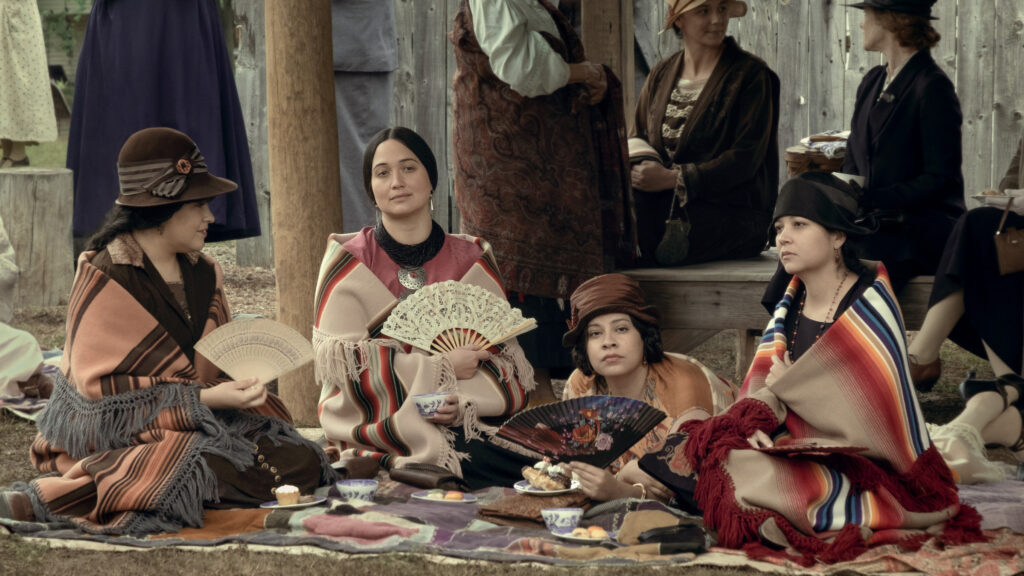
Josh: With that said and acknowledging that it’s not up to me to be in charge of how movies are made, I would love to see anyone else retell this story from the Osage perspective. My vague understanding is that tribe members expended considerable resources trying to get law enforcement to care and that they bore much of the responsibility for getting the federal government to investigate. Much of this happens on the periphery.
Lily Gladstone does a lot with her role, establishing Mollie’s allure and agency, so it’s all the more painful when she almost disappears from it, left trapped much of the movie’s long middle hours silently suffering in a bed, wasting away, robbed of her agency. It’s effective but unfortunate.
Chris: I know I wrote this above but I didn’t have an issue with on-screen time for Lily Gladstone. It seems like the exact same critique we saw with Anna Paquin in The Irishman. I saw Mollie as almost omnipotent because her presence is felt in almost every scene and it’s her strength in her recovery that helps unravel the gross scheme.
Josh: What do you make of the penultimate framing device that recaps the aftermath of the crimes, the fate of most of its characters, and the legacy of the investigation in a hokey radio play funded by the US Government, complete with a direct-to-camera coda from the director himself? Super indulgent? Of a piece with the setting? Scorsese’s earned the right to do whatever he wants, but it’s a huge zag to end on. I can’t tell whether he just didn’t know how to wrap it all up, or, more likely was connecting threads of showbiz and crime and the way that these forces have fed on each other for centuries.
Chris: When I was watching the movie, I remember looking at my watch and thinking there was still a lot of history to explain in a short period of time. I thought it was an inventive way to wrap up the story. I’m not sure it was fully effective, and I agree it was quite the zag, but I didn’t mind it.
Josh: The final scene, on the other hand, connecting the past to the present was quite powerful. The Osage may not not necessarily be the winners of history, but their survival is in itself a victory given the vast forces against them.
Chris: I can’t agree more.
Josh: I suppose we can close this with one more agreement. Like you said in your review, and despite what seem like a bunch of quibbles throughout our conversation, I also very much look forward to revisiting this long film, definitely before the year ends and we make our various top ten lists!
Killers of the Flower Moon is playing in theaters everywhere. Images courtesy of AppleTV+, which will stream the film sometime later this year.
This piece was written during the 2023 SAG-AFTRA strike. Without the labor of the actors currently on strike, the film being covered here wouldn’t exist. More information about the strikes can be found on the SAG-AFTRA Strike hubs. Donations to support striking workers can be made at the Entertainment Community Fund.

